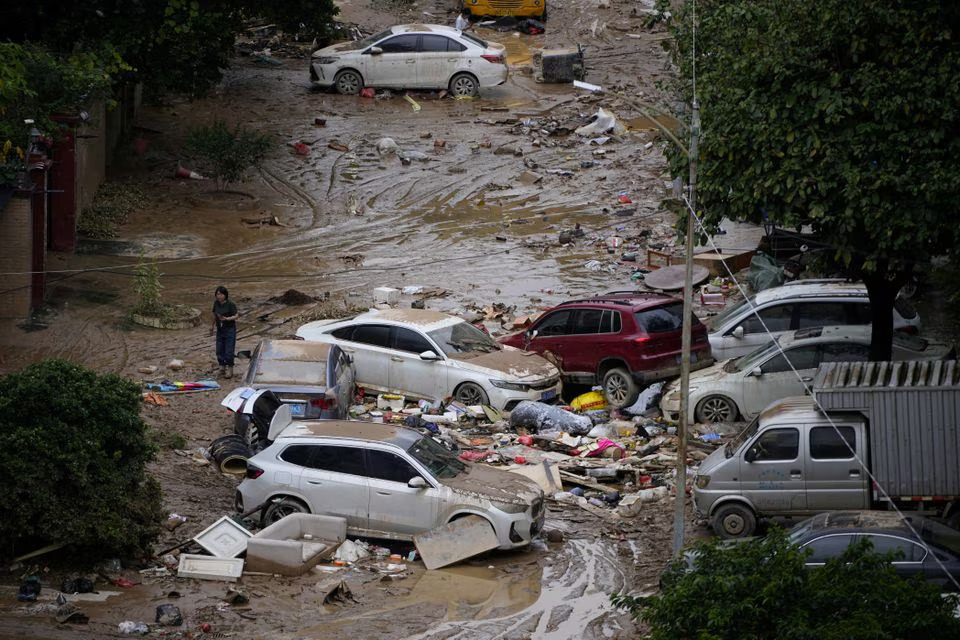- By Kamal Kumar
- Mon, 11 Sep 2023 11:52 AM (IST)
- Source:REUTERS
Hit by the worst rainfall in the last 70 years, parts of southern China continue to face severe flooding after the seventh day of the landfall of Typhoon Haikui. The low-lying areas of Guangdong, Guangxi and Fujian remained drenched, with thousands of residents stranded. Authorities are trying to rescue them on assault boats and ferries.
In the suburb of the Guangxi region, rescuers scrambled to pull people to safety after the floodwater exceeded a level of more than 2 metres (6.6 feet), trapping residents in their low-rise homes, Reuters reported, quoting state media.
Intense rainfall is expected to continue in Guangxi for the next several days. While Haikui transitioned from a typhoon to a tropical storm after hitting Fujian province on September 5, its remaining atmospheric circulation is still causing significant disruptions in southern China. Notably, Shenzhen, a densely populated city, is currently experiencing its most substantial rainfall since record-keeping began in 1952 due to the lingering effects of Haikui's circulation.
Hong Kong, the Special Administrative Region of the People's Republic of China and one of the world's most significant financial centres, is gripped by the heaviest rainfall since records began 140 years ago. The heavily populated hill territory is facing the worst climate crisis of the 21st century, which has claimed two lives and injured more than 140 people. Last week, schools were closed "because of severe conditions", and employees were advised to work from home on Friday as streets, shopping centres, and subway stations were submerged. The critical cross-harbour tunnel connecting Hong Kong Island to Kowloon was also flooded, and landslide alerts were issued for certain regions.
Researchers caution that the intensity of typhoons striking China is increasing, and their trajectories are becoming more complex. Rising complexity raises the potential for disasters, even in coastal cities like Shenzhen, which are accustomed to dealing with tropical cyclones and have robust flood defence systems in place.
Shao Sun, a climatologist at the University of California, Irvine, explained, "Typhoons that move far inland affect regions historically less exposed to heavy rainfall and strong wind, often with lower disaster resilience, leading to more severe losses." In the case of Shenzhen, the disaster was mainly due to the slow westward movement of Haikui's residual circulation, which nearly stagnated in its spatial position from the afternoon of September 7 to the early hours of September 8, and a "train effect" of heavy rainfall occurred, causing the event to exceed its expected intensity.
The term "train effect" describes the cumulative impact generated when multiple consecutive convective cloud systems move across a specific region. This phenomenon leads to a notable buildup of rainfall and significantly increases the likelihood of experiencing heavy or extreme precipitation.

